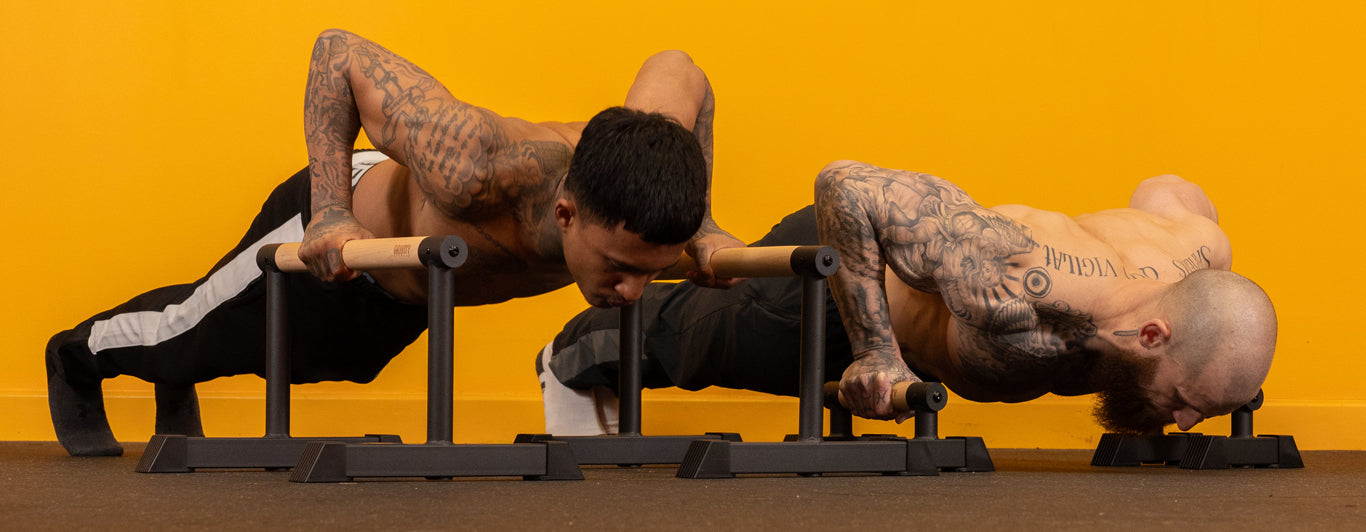
How to get results from calisthenics in 20 minutes
Do calisthenics workouts need to be long, or can you get results from 10 or 20 minutes of calisthenics? Here’s how to design short calisthenics sessions that will get you stronger.
How long do calisthenics sessions need to be?
One of the best things about calisthenics is how versatile it is. Bodyweight training is the ultimate do anywhere, any time training style. But does that mean a 10 minute blast of calisthenics will actually be useful? Or do you need to spend 45+ minutes on each calisthenics session.
You’ll be pleased to hear that short sessions of calisthenics work are definitely worth it. You can make measurable progress with your strength, fitness, or skills goals without spending longer than 30 minutes per session. In fact, if all you’ve got is 5 minutes during the day, you can get results.
But of course it’s not as simple as just doing random 15 minutes here and there. The rules of training are even more relevant when you’re doing short sessions. If you want to get results from short calisthenics sessions, pay attention to training frequency, intensity, and total volume across the week or month.
Is 20 minutes of calisthenics enough
Everyone’s busy these days, and most people don’t have time for 60+ minute gym workouts or two-a-day sessions. With calisthenics, you don’t need to spend hours in the gym. You could legit keep all your sessions to 20 minutes and get seriously strong and skilled. The secret lies in planning, programming, and training intensity.
How to make progress in short calisthenics workouts
Making progress in calisthenics is more down to your exercise selection, programme design, and intensity than it is down to workout duration. After all, you could be in the gym for an hour and wander between exercises, taking long rest periods, and training at low intensity. Yes, you would have been in the gym for a long time. But you’d get much more work done in a 20 minute session with a plan.
The 6 rules for short sharp calisthenics workouts
- Exercise selection – choose exercises that are relevant to your goal, build on each other, and push your progress. Consider pairing exercises up as an A/B superset to maximise short workouts.
- Training plan – have a training plan for each session and for each training block so you hit the ground running knowing exactly what to do.
- Progressive overload – make sure your training programme builds on the principle of progressive overload (gradually pushing intensity, load, or volume)
- Intensity and rest periods – short workouts mean you’ll need to cut rest periods down and ramp up the intensity to make the most of the time you’ve got.
- Total volume – take a look at your total volume (reps and sets) across each workout and your total training week.
- Training frequency – if your workouts need to be short, you may need to increase your training frequency to get more volume into the week.
What works better workout intensity vs duration
Is workout duration or training intensity more important for getting results in calisthenics? Longer training sessions can be beneficial, but intensity and total training volume matter much more. After all, the time on the clock doesn’t really mean anything. What counts is what you do with the time.
Short, intense calisthenics sessions can stimulate muscle growth, improve your fitness, and help you master skills. Think about quality of movement, intensity, and short rest periods.
How to do capacity sessions in calisthenics
When time is tight, work capacity sessions can come in useful. “Work capacity” training means short efforts done at high intensity. It’s pretty obvious how to apply that to running. But how does this work for calisthenics?
Bring work capacity theory into calisthenics by choosing challenging exercises and doing reps in quick succession with short rest periods. You could also pair exercises together to do supersets.
Measure work capacity in calisthenics by tracking the amount of high quality effort you can achieve in a given timeframe. For example, how many reps can you do in a set time? Or how long does it take you to do a certain amount of reps. If you’re a fan of heart rate training, use this to get a clear measure of effort in your work capacity/conditioning sessions.
How to structure a 20-minute calisthenics session
- Warm-up – 2-3 minutes of cardio, dynamic stretches, and mobility work
- Compound movements – 7-8 minutes of multi-joint exercises, possibly performed as a superset
- Skill work – 4-5 minutes of specific skills and drills
- Work capacity – 2-3 minutes of higher intensity work focused on conditioning
- Cool down – bring your heart rate down, stretch out.
Are short calisthenics sessions worth it?
Yes, ask any coach. Not only is it possible to achieve results with 15-20 minute calisthenics session. It might actually be preferable to long, directionless sessions that leave you needing too much recovery. Just remember the golden rules we outlined above: have a plan, choose relevant exercises, increase your intensity, and bring down your rest periods.
Check out the Gravity Fitness store for must-have and innovative new calisthenics equipment you can use anywhere, any time to make progress in your calisthenics journey.

































